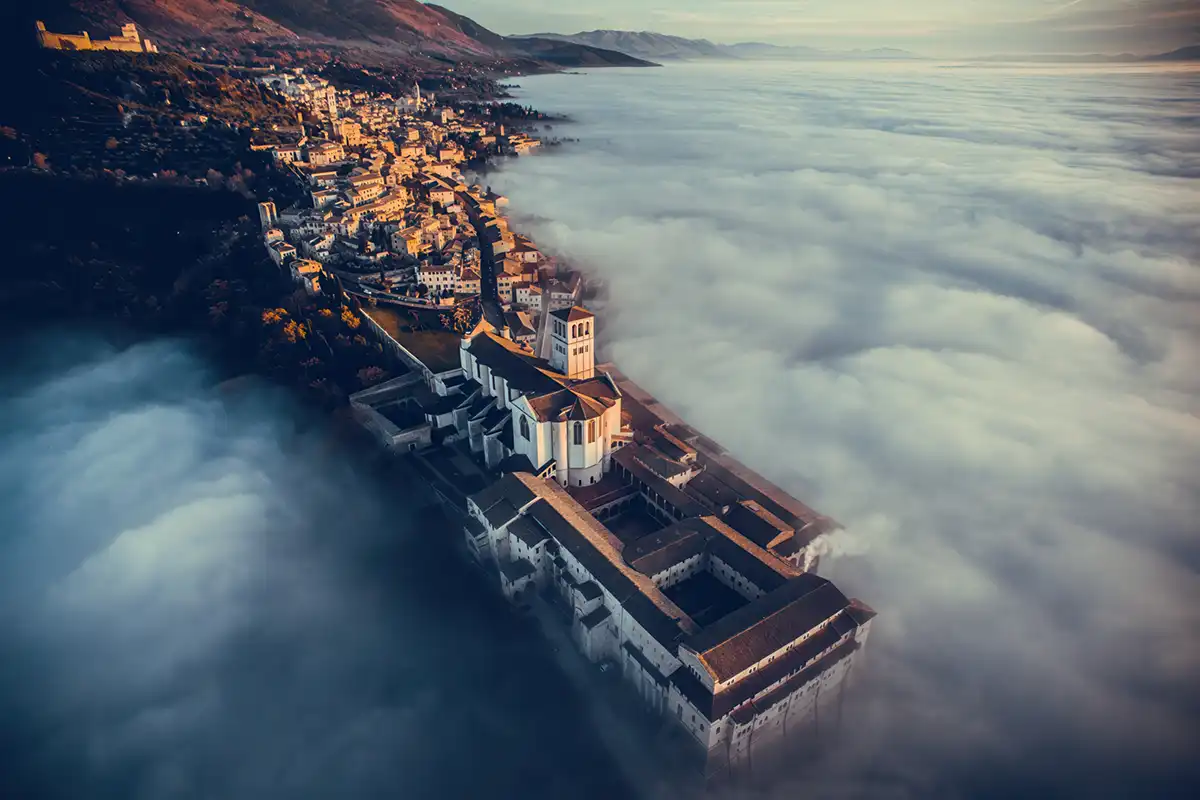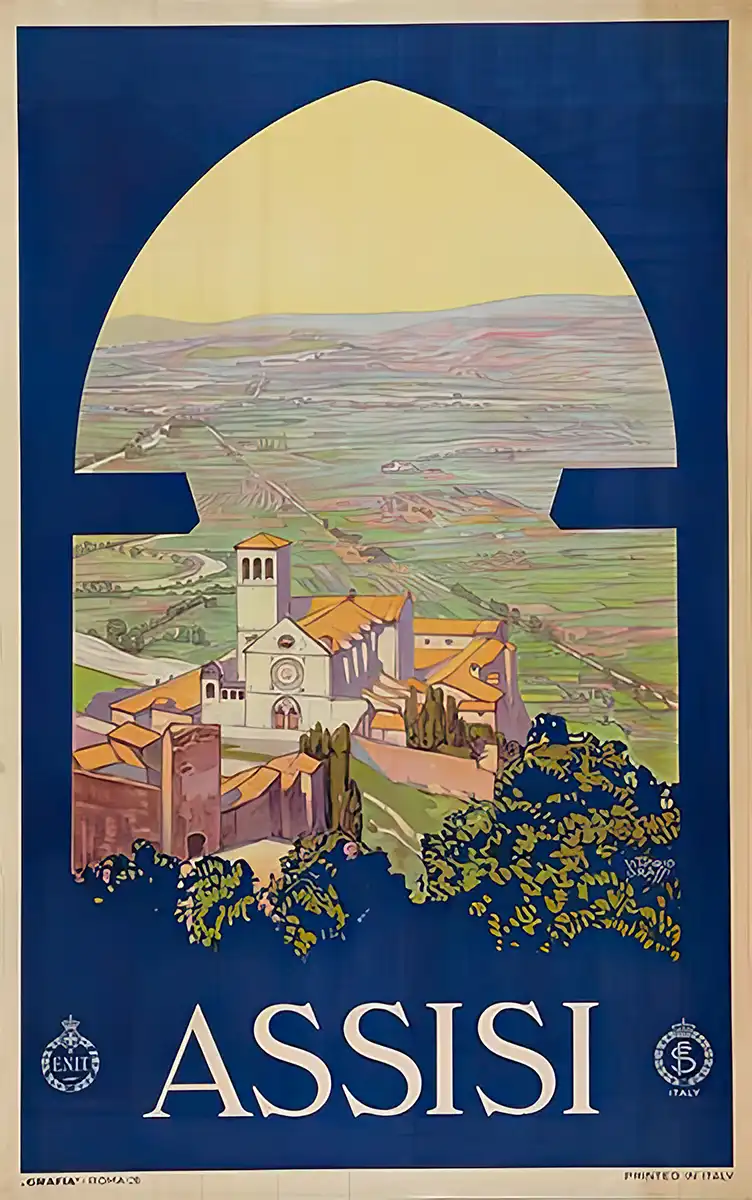Assisi Facts
Interesting Assisi, Italy Facts
St. Francis of Assisi, Italy
-
Approximately 90 miles north of Rome, in the rolling hills of Umbria, stands the exceptionally well-preserved medieval town of Assisi.
-
Known primarily as the birthplace of St. Francis (1182-1226 AD), the town has been a sacred place since long before the Franciscan era.
-
Little is known regarding the original founding of the town. One legend tells that the ancient town, called Assisium, came into existence around a holy spring that was later venerated by the Etruscans (9th – 5th centuries BC) and, following them, by the Romans.
-
Another legend tells that the town was begun by Dardanus 865 years before the founding of Rome (April 21, 753 BC).
-
Sometime in the 1st century BC a temple of Minerva, the Roman goddess of art, handicrafts and the professions, was constructed at the sacred spring. During the early Christian era the sanctuary of Minerva was destroyed, a series of churches were erected at the site, and the sacred spring stopped flowing.
-
In 238 AD Assisi was converted to Christianity by bishop Rufino, who was martyred at Costano. According to tradition, his remains rest in the Cathedral Church of San Rufino in Assisi.
-
Subject to the dukes of Spoleto in the early Middle Ages, the town of Assisi became an independent commune in the 12th century and was involved in disputes and battles with nearby Perugia before passing to the Papal states. It became part of the Italian kingdom in 1860.
-
St. Francis was born in Assisi in 1182 (some sources say 1181), the son of a well-to-do cloth merchant. A lively, even riotous youth who dreamed of achieving military glory, Francis abandoned his worldly ambitions at the age of 19 while a prisoner of war in Perugia.
-
St. Francis thereafter became a mystic who experienced visions of Christ and Mary, composed the first poems in the Italian language about the beauties of nature, and in 1210 founded the famous order of mendicant friars known as the Franciscans.
-
His repudiation of the worldliness and hypocrisy of the church, his love of nature, and his humble, unassuming character earned him an enormous following throughout Europe, posing an unprecedented challenge to the decadent Papacy.
-
Francis was the first known Christian to receive the stigmata, the spontaneously appearing wounds on the hands, feet and side of the body corresponding to the torments of Christ on the cross. These injuries caused Francis great pain and suffering, but he bore them with his characteristic serenity, keeping the matter secret for many years so as not to draw attention to himself and away from god.
-
The Basilica of San Francesco, one of Italy's foremost monuments, was built between 1228 and 1253 AD. The short period of its construction, rare for a church of this size, is often explained as a measure of the great love that the people of the time had for St. Francis.
-
The decline of Assisi begun after the Black Death in 1348. In order to assure the Pontifical dominion over Assisi, Cardinal Aegidius Albornoz erected in 1367 the Rocca Maggiore on top of the ruins of the former imperial fortress.
-
By the mid 1400's pilgrims were flocking to Assisi from all parts of Europe and today the walled medieval town and its grand basilica are among the most visited of Christian shrines.
-
Assisi was hit by the devastating twin earthquakes that shook Umbria in 1997, but the recovery and restoration have been remarkable, although much remains to be done. Massive damage was caused to many historical sites, but the major attraction, the Basilica di San Francesco, reopened less than two years later.
-
UNESCO collectively designated the major monuments and urban fabric of Assisi as a World Heritage Site.
There are many poems and quotes attributed to St. Francis, including the much-loved Prayer of St. Francis
Prayer of St. Francis
Lord, make me an instrument of your peace.
Where there is Hatred, let me sow Love.
Where there is Injury, Pardon.
Where there is Doubt, Faith.
Where there is Despair, Hope.
Where there is Darkness, Light, and
Where there is Sadness, Joy.
O Divine Master, Grant that I may not so much
Seek to be consoled as to console,
To be understood, as to understand,
To be loved, as to love,
For it is in giving that we receive,
It is in pardoning that we are pardoned,
And it is in dying that we are born to Eternal Life.

Martin Gray is a cultural anthropologist, writer and photographer specializing in the study of pilgrimage traditions and sacred sites around the world. During a 40 year period he has visited more than 2000 pilgrimage places in 160 countries. The World Pilgrimage Guide at sacredsites.com is the most comprehensive source of information on this subject.


